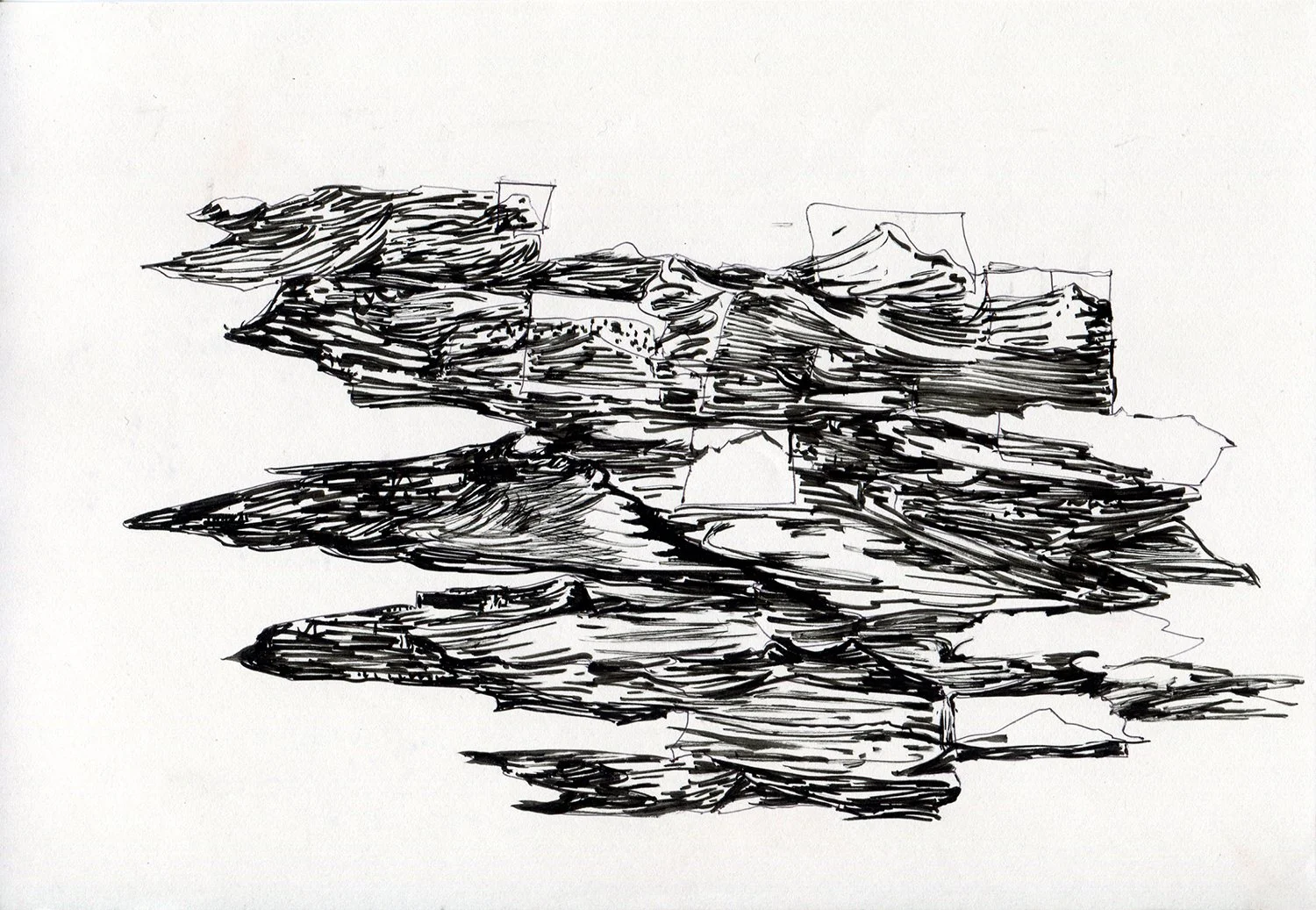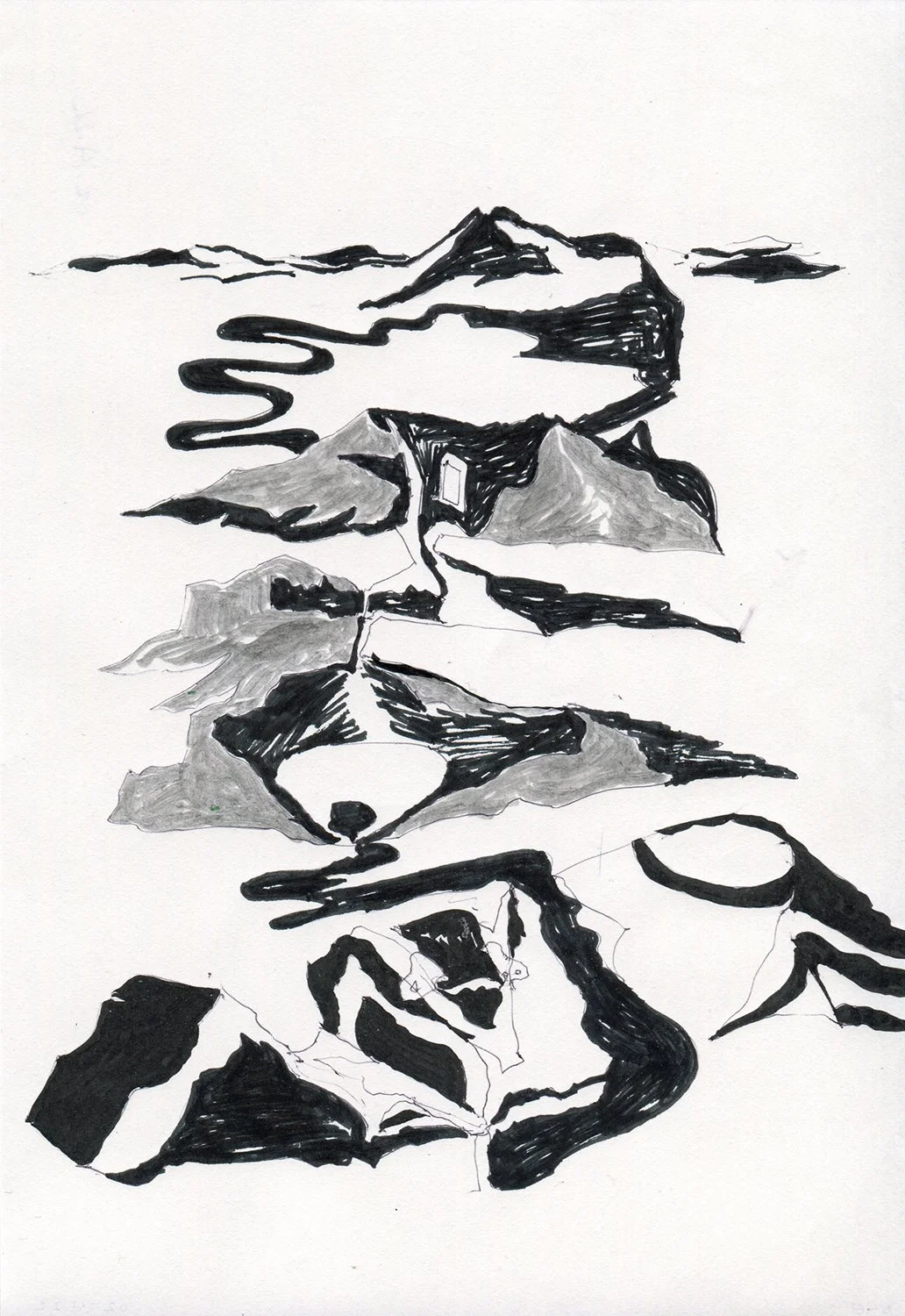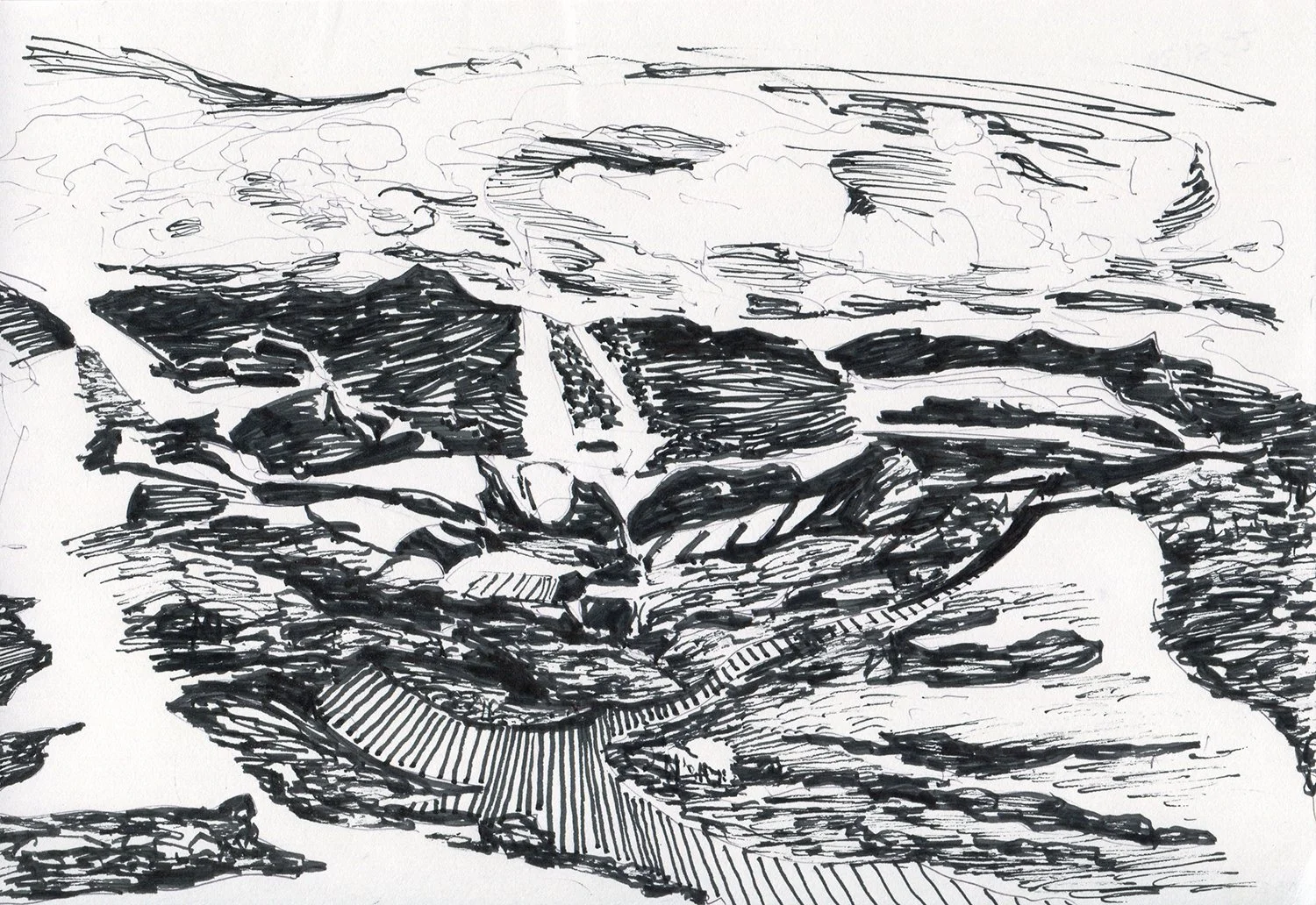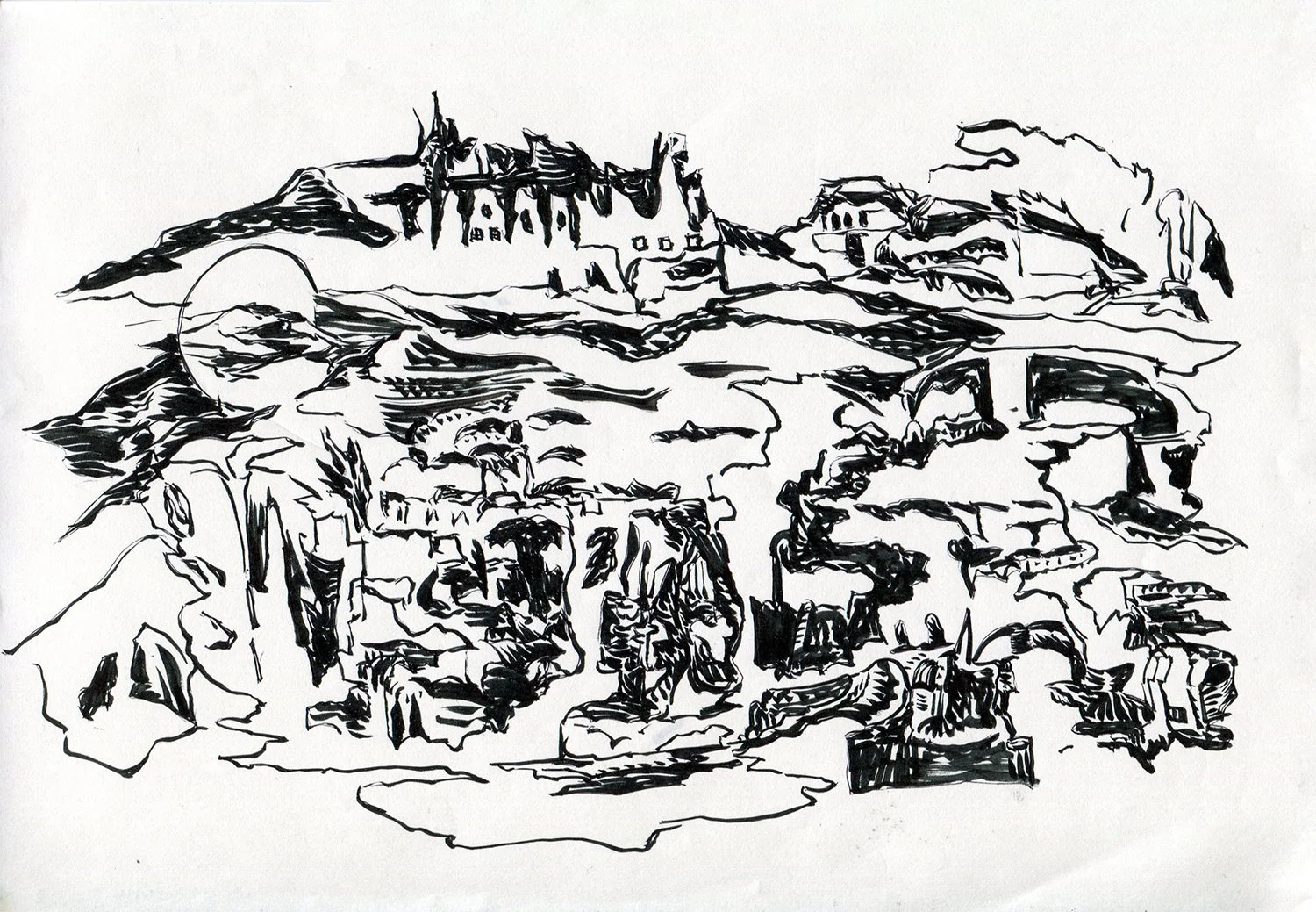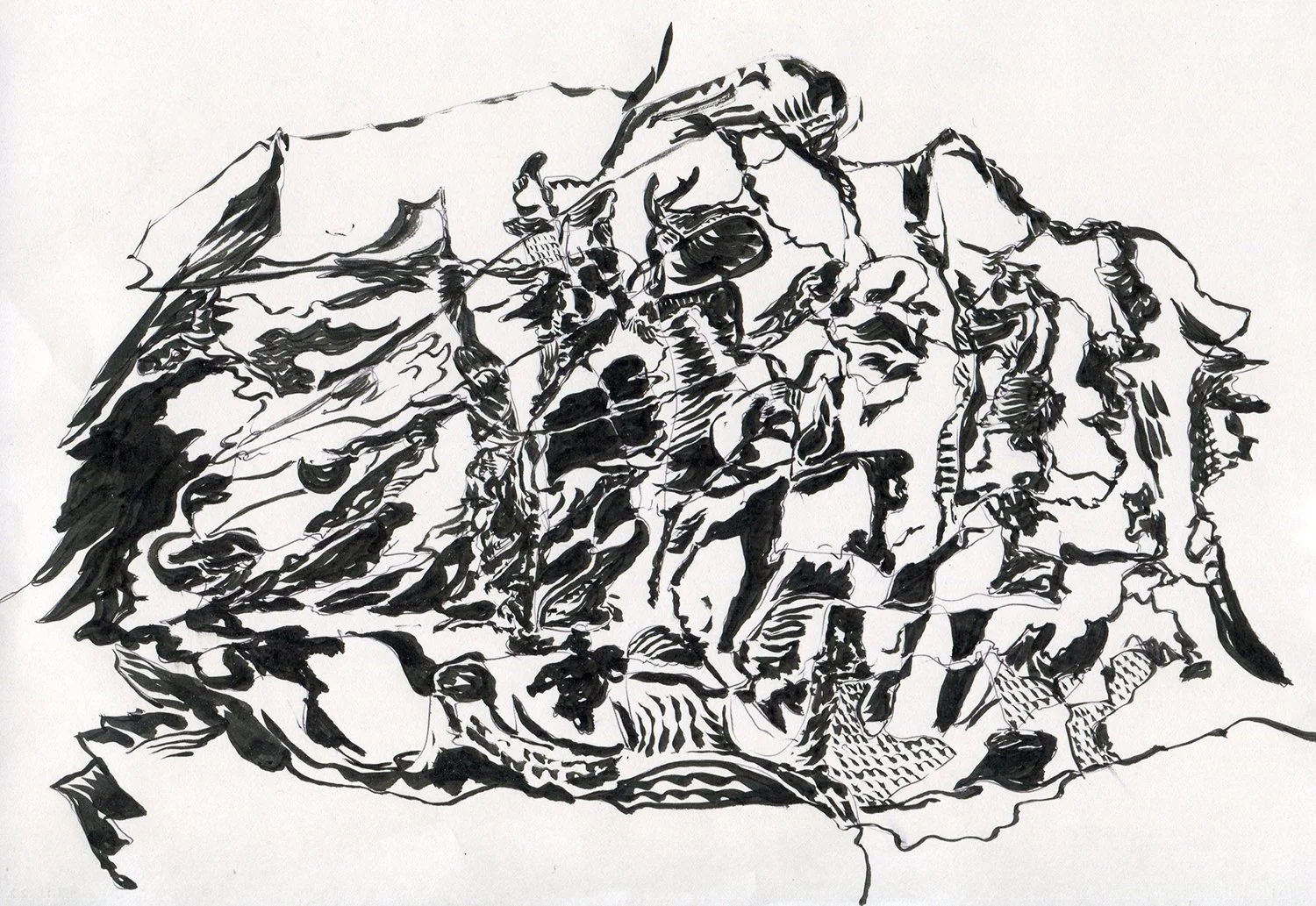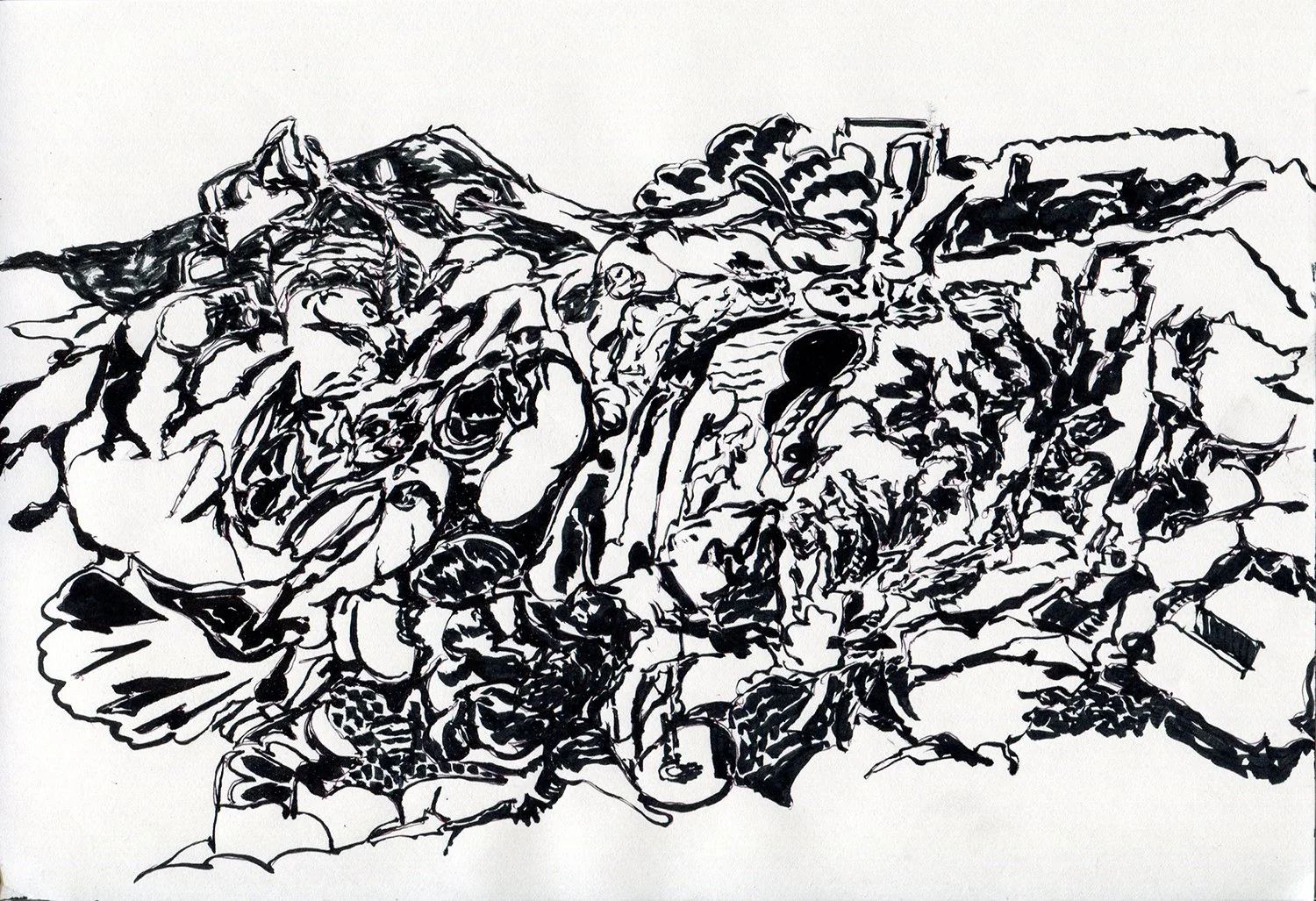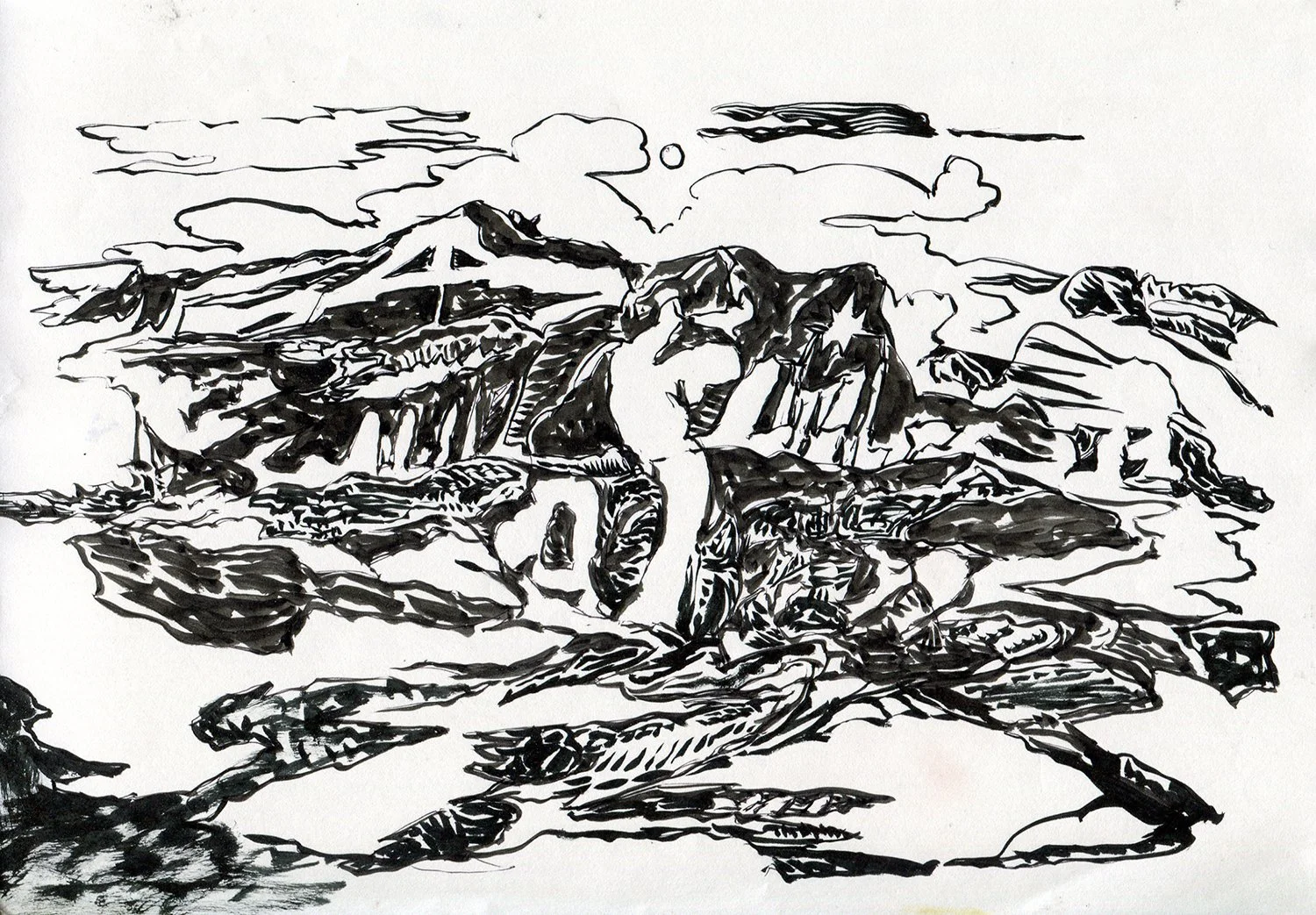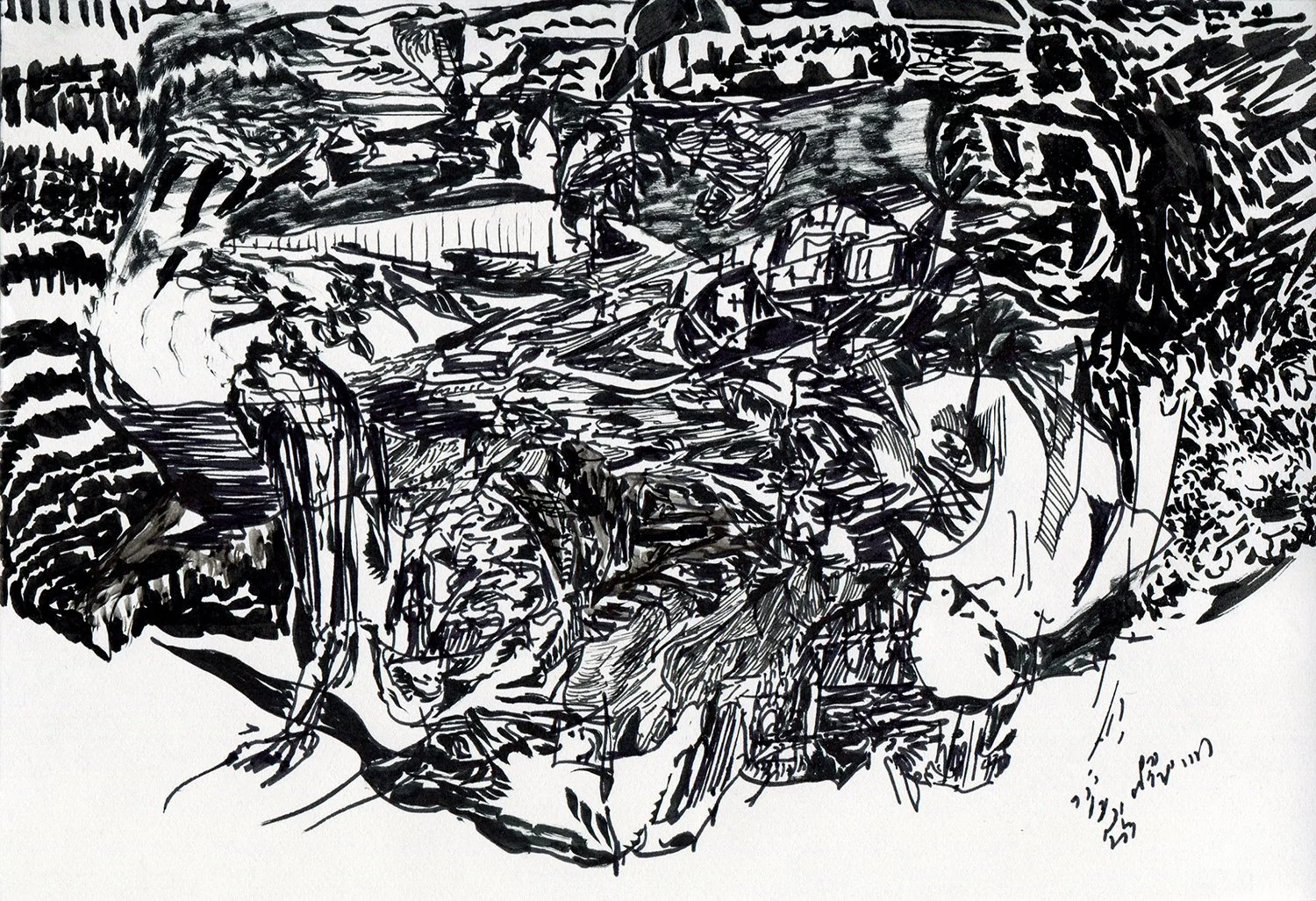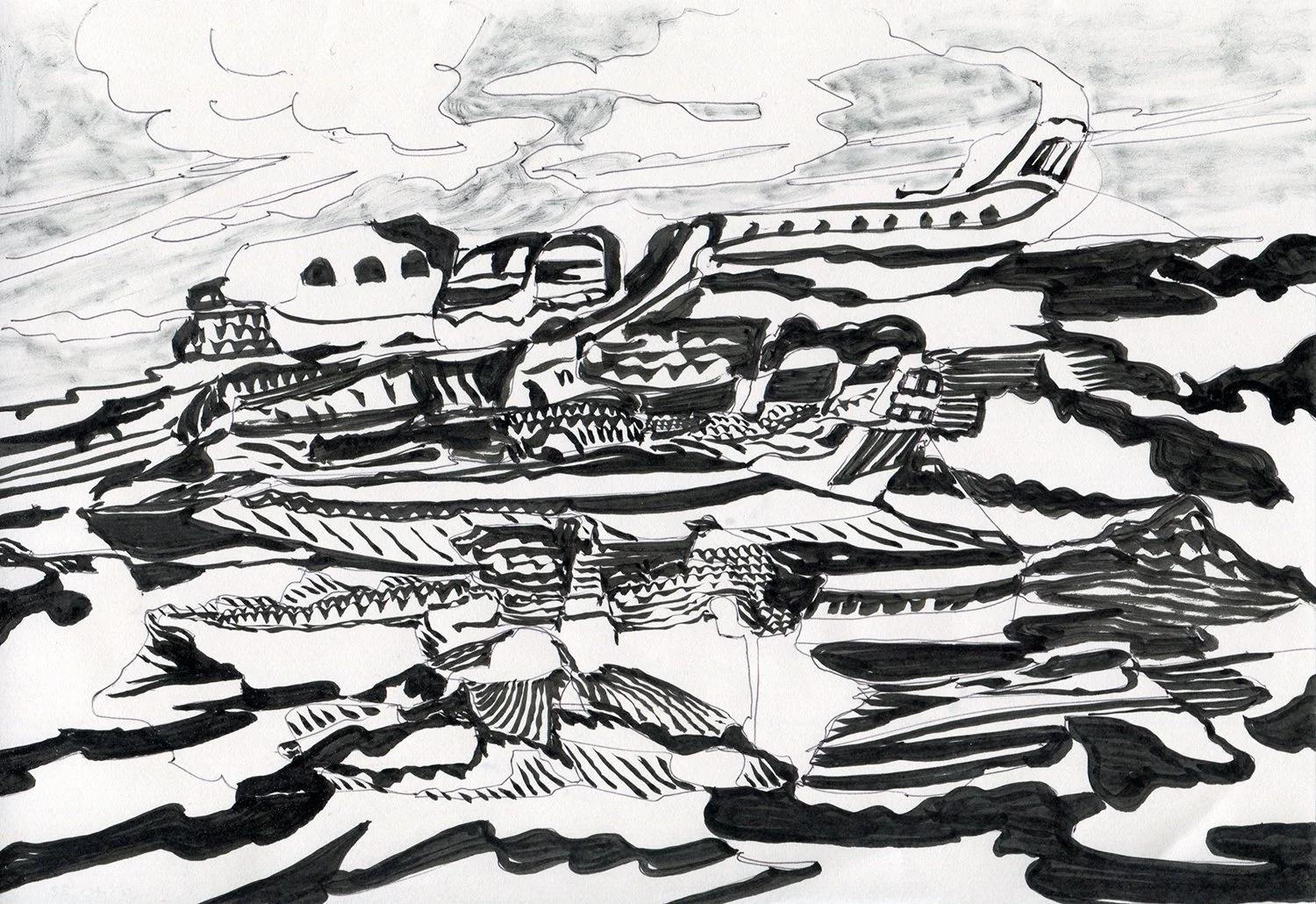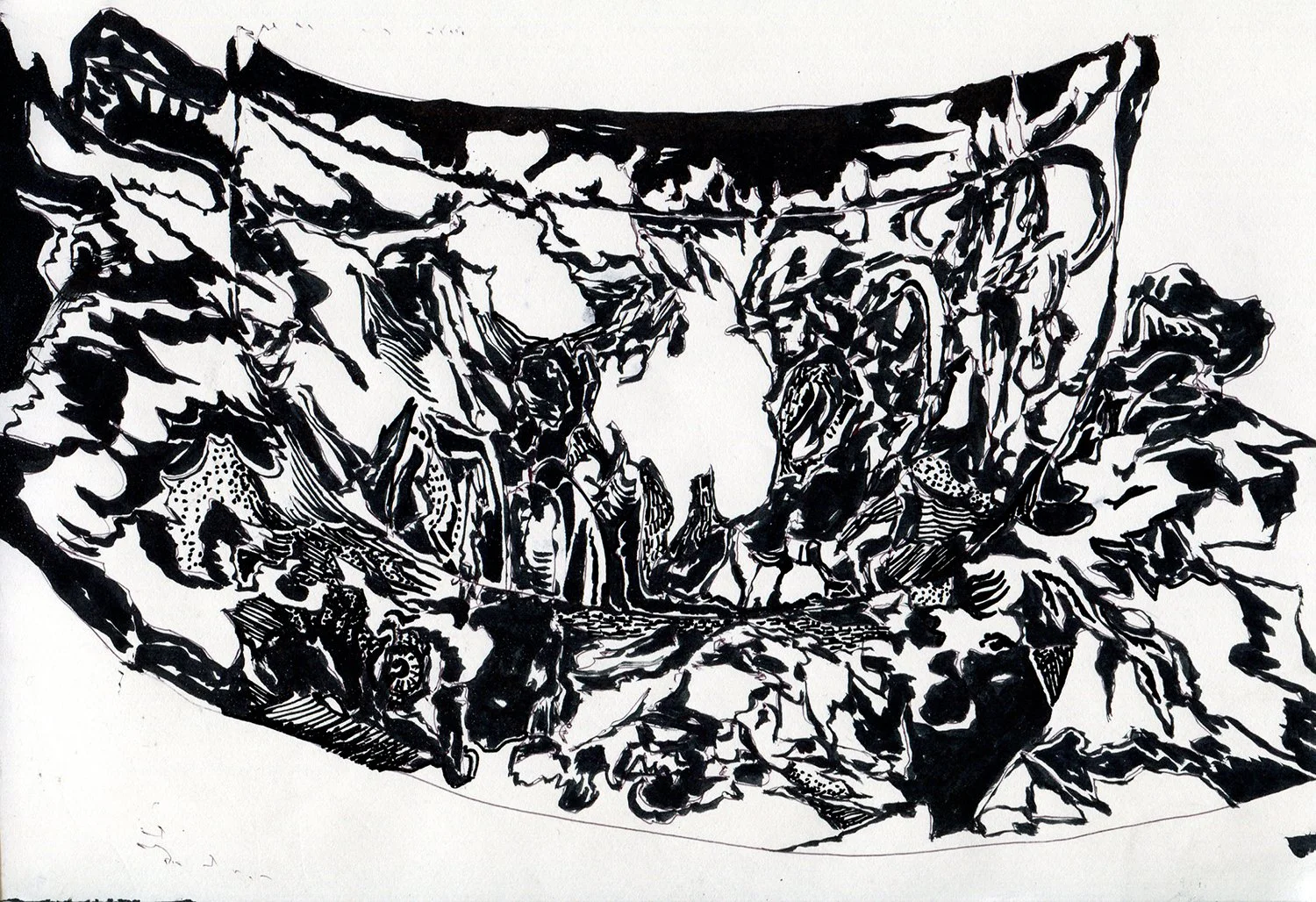At the Threshold of Recognizability
There is a growing swath of the earth’s inhabitants for whom “the future” and “the normal” is not accessible, whose plans are not transactable, and voices are not heard. These unrecognized beings have been put through processes of undocumentation in accord with the normal functioning of the law, and all the discourses subsumed to its practice. The precarity this undocumentation produces, renders the process of legal embodiment and representation as a failure within national and international schemes of habitation, social participation, and governance. One of the symptoms is an instrumentalization, within legal, informal and institutional representations, of an undocumented body politic as Rückenfigur, the halted traveller motif popularized through Caspar David Friedrich’s “Wanderer above the Sea Fog”. This motif represents a person seen from behind in the foreground of the image, contemplating the view before them. This is a graphic device of internalizing an-other’s view. In contrast, Higuera’s work presents the boundaries between figure-and-ground and self-and-other, among other distinctions, as inhabiting thresholds of recognizability — of personal and social opacity permeated by transparency and vice-versa.
This investigation of the unseen, the undocumented, and the affective through black-and-white, figure-and-ground reversals and generative compositions are alliterative means of understanding the experience of migration, relation, and the soul’s journey through complicated histories and national boundaries. These drawings are approaches to permeate the subjects and objects of the pluriverse — the scales, territories, intentions and dislocations orchestrating the relations of the material and the immaterial.
En el Umbral de lo Reconocible
Existe una franja cada vez mayor de los habitantes de la tierra para quienes “el futuro” y “lo normal” no son accesibles, cuyas proyecciones no son transaccionables y cuyas voces no son escuchadas. Estos seres no reconocidos han sido sometidos a procesos de indocumentación en conformidad con el funcionamiento normal de la ley y con todos los discursos subsumidos a su práctica. La precariedad que produce esta indocumentación convierte el proceso de encarnación y representación legal en un fracaso dentro de los esquemas nacionales e internacionales de habitación, participación social y gobernanza. Uno de los síntomas es la instrumentalización, dentro de representaciones legales, informales e institucionales, de un cuerpo político indocumentado como Rückenfigur, el motivo del viajero detenido popularizado por El caminante sobre el mar de nubes de Caspar David Friedrich. Este motivo representa a una persona vista de espaldas en el primer plano de la imagen, contemplando el paisaje frente a ella. Se trata de un recurso gráfico para internalizar la mirada de un otro. En contraste, el trabajo de Higuera presenta los límites entre figura y fondo y entre yo y otro, entre otras distinciones, como umbrales de recognoscibilidad —de una opacidad personal y social permeada por la transparencia y viceversa.
Esta investigación de lo no visto, lo indocumentado y lo afectivo a través de contrastes en blanco y negro, inversiones de figura y fondo y composiciones generativas constituye un medio aliterativo para comprender la experiencia de la migración, la relación y el viaje del alma a través de historias complejas y fronteras nacionales. Estos dibujos son aproximaciones para permear los sujetos y objetos del pluriverso —las escalas, territorios, intenciones y desplazamientos que orquestan las relaciones entre lo material y lo inmaterial.

